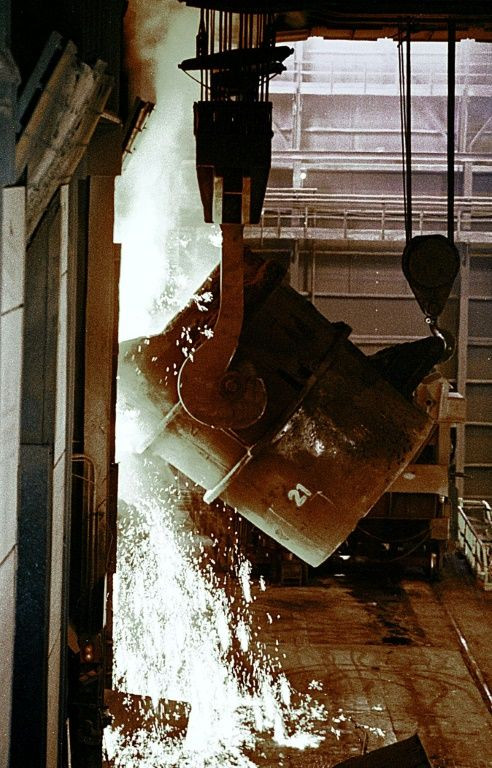US Trade War: Trump Reinstates Tariffs On Steel, Aluminum Imports From Brazil, Argentina

As he battles with China over a new trade deal, U.S. President Donald Trump restored tariffs on Monday on steel and aluminum imports from Brazil and Argentina.
“Brazil and Argentina have been presiding over a massive devaluation of their currencies, which is not good for our farmers,” Trump tweeted. “Therefore, effective immediately, I will restore the tariffs on all steel and aluminum that is shipped into the U.S. from those countries.”
Trump also took a swipe at the Federal Reserve, by suggesting the central bank should “act so that countries, of which there are many, no longer take advantage of our strong dollar by further devaluing their currencies. This makes it very hard for our manufacturers and farmers to fairly export their goods.”
Thus far this year, the U.S. has imported about 3.8 million metric tons of steel from Brazil – or about 3.5% of the 110 million tons of that the U.S. consumes annually.
Brazil is the second biggest exporter of steel to America -- ArcelorMittal Tubarão, Companhia Siderúrgica do Pecém and Ternium Brazil are the three principal suppliers.
Argentina is one of the 10 largest exporters of aluminum to the U.S. Aluar is Argentina’s sole domestic producer.
In March 2018, Trump had ordered a 25% tariff on all foreign steel imports and a 10% tariff on all aluminum imports. However, Argentina subsequently was granted a “permanent exemption” from the tariffs. Brazil also had been granted certain exemptions from tariffs, based on production figures.
On Monday, Jair Bolsonaro, Brazil’s right-wing president, said he will not react to Trump’s decision prior to speaking to his economy minister.
“If needed, I can also talk to Trump, I have an open channel with him,” he said.
Argentina’s peso currency dropped earlier this year following elections that put leftist Alberto Fernandez in the presidency.
Meanwhile, Brazil has repeatedly intervened to support its currency, which plummeted largely over political turmoil in the country, linked to the release from jail of former Brazilian President Luiz Inácio Lula da Silva, who has called for protests against Bolsonaro.
Bloomberg reported Trump may also be retaliating against Brazil and Argentina since they have increased exports of soybeans and other agricultural products to China, thereby taking market share away from the U.S.
Fortune noted last month U.S. steel prices have been suffering despite the 2018 tariffs on steel imports, due mostly to a weaker global economy and lower demand.
“Even with these very high tariffs, the industry has not been able to take advantage,” said Christine McDaniel, a senior research fellow at Mercatus Center, an economic think tank at George Mason University.
Mark Lash, president of United Steelworkers Local 1066 in Gary, Indiana, said over time steel pricing has "come down, down, down, down, down. It’s not where it was when the tariffs were [first] announced.”
Commerce Secretary Wilbur Ross declared foreign steel imports posed a threat to national security.
In a Wall Street Journal op-ed, Ross wrote that tariffs were needed because steel and aluminum imports have helped erode the domestic industry to the point that it threatens national security.
“Unfair trading practices from countries like China have distorted the global steel and aluminum markets,” he wrote.
Ross also noted that since 1998, “countless” steel mills and aluminum smelters have closed and more than 75,000 steel jobs have disappeared.
“Today the U.S. has only one steel mill that can produce the advanced alloys used in armored-vehicle plating; one aluminum smelter that makes the high-grade aluminum needed for defense aerospace applications; and one steel mill that makes the materials needed for infrastructure like electrical transformers,” he added. “These tariffs aim to reverse this sorry state of affairs.”
Ross’ Commerce Department also indicated that the U.S. is now the world’s largest importer of steel – with imports nearly four times greater than exports.
“China is by far the largest producer and exporter of steel, and the largest source of excess steel capacity,” the Commerce Department added. “Their excess capacity alone exceeds the total U.S. steel-making capacity. On an average month, China produces nearly as much steel as the U.S. does in a year.”
The World Steel Association predicted that U.S. demand for steel will slow down from 1% growth in 2019 to 0.4% in 2020.
© Copyright IBTimes 2024. All rights reserved.




















